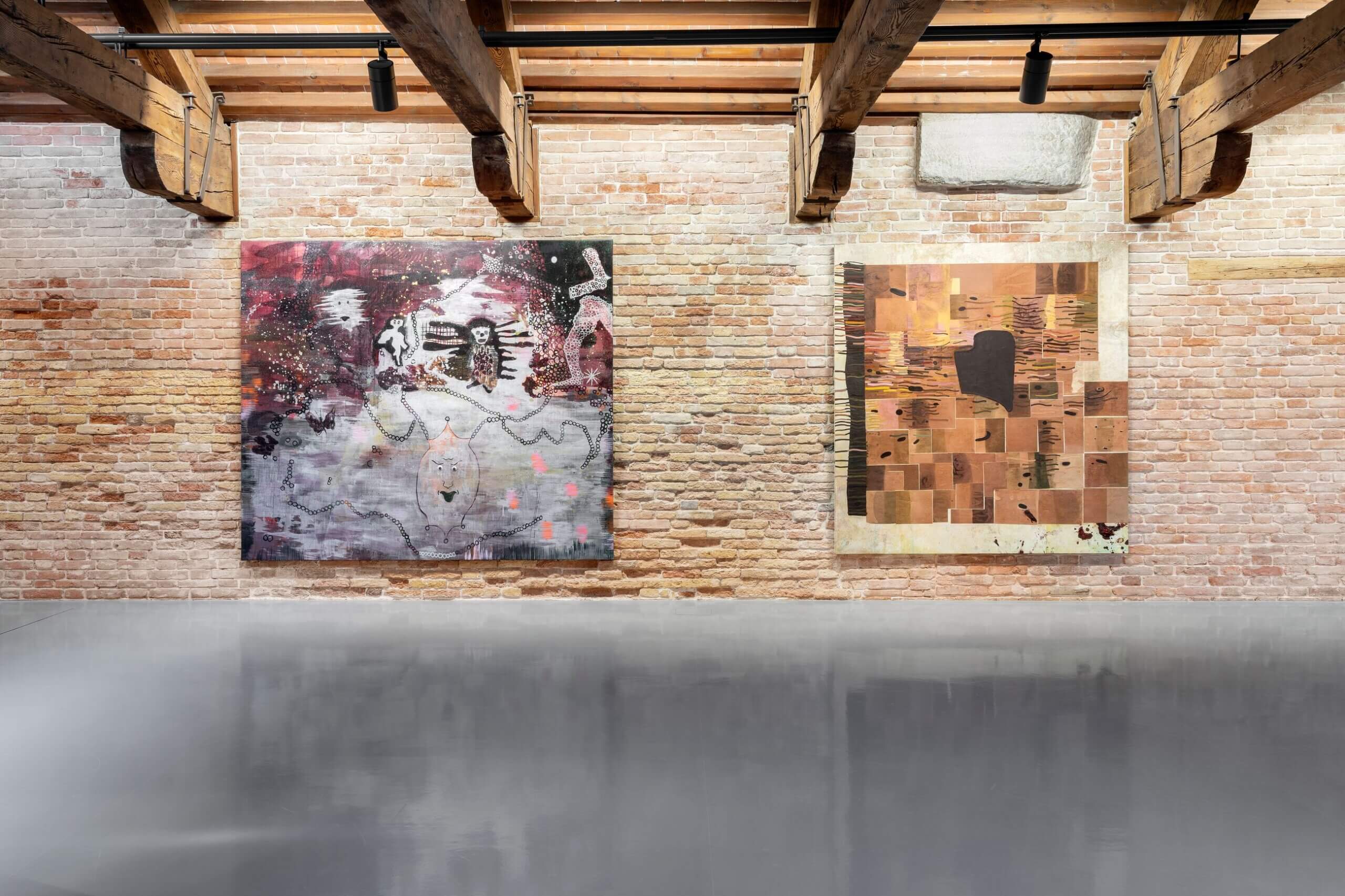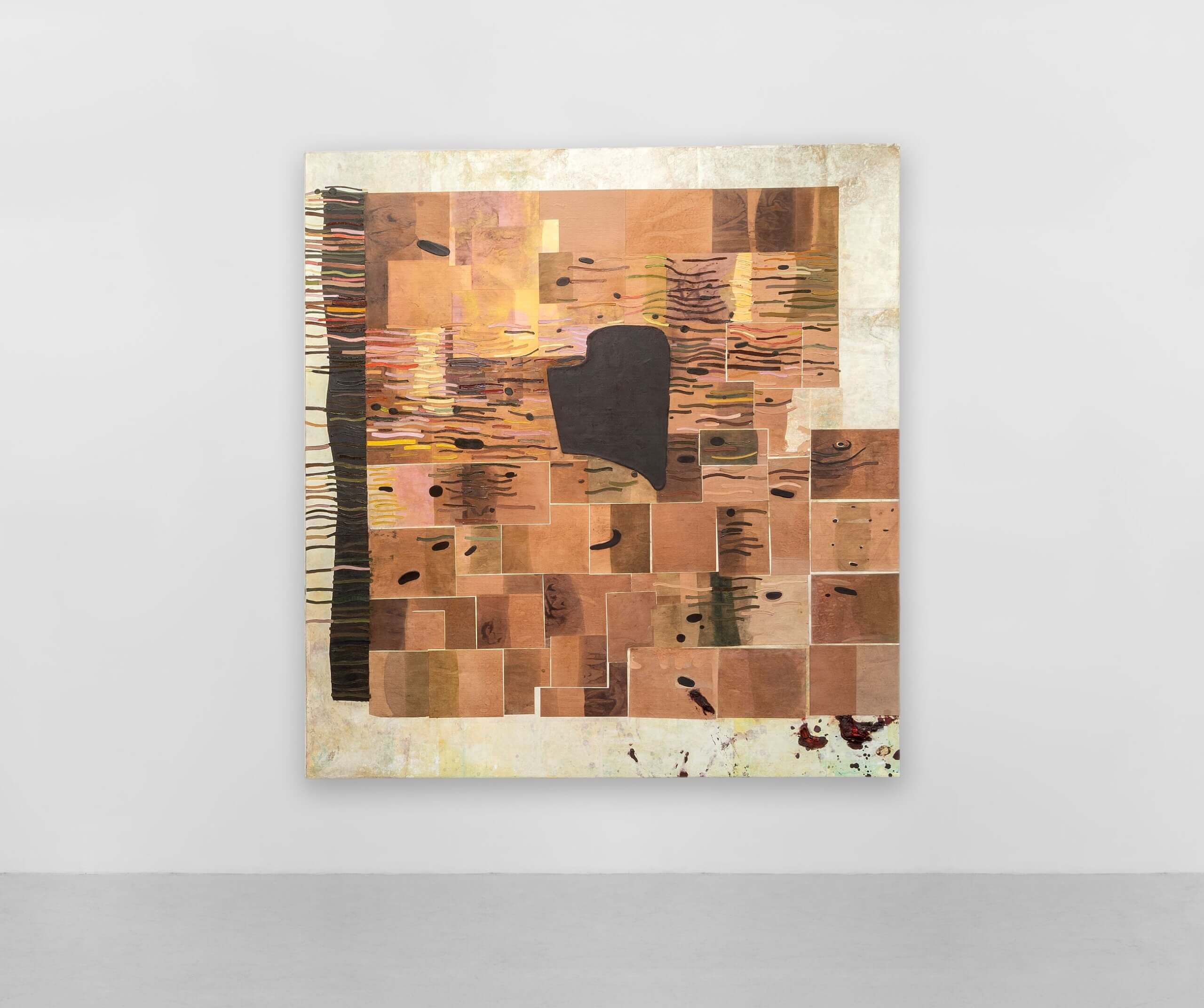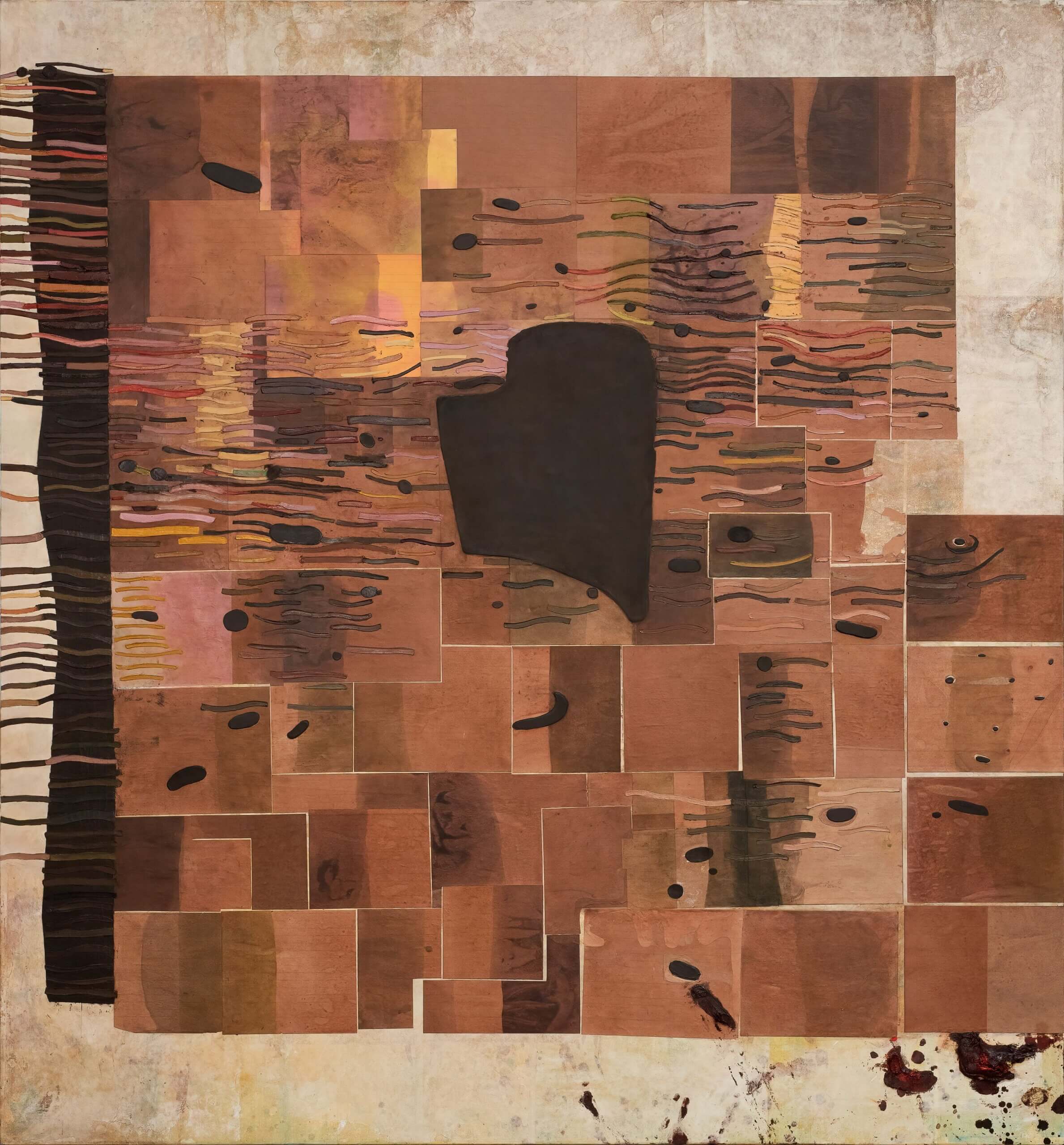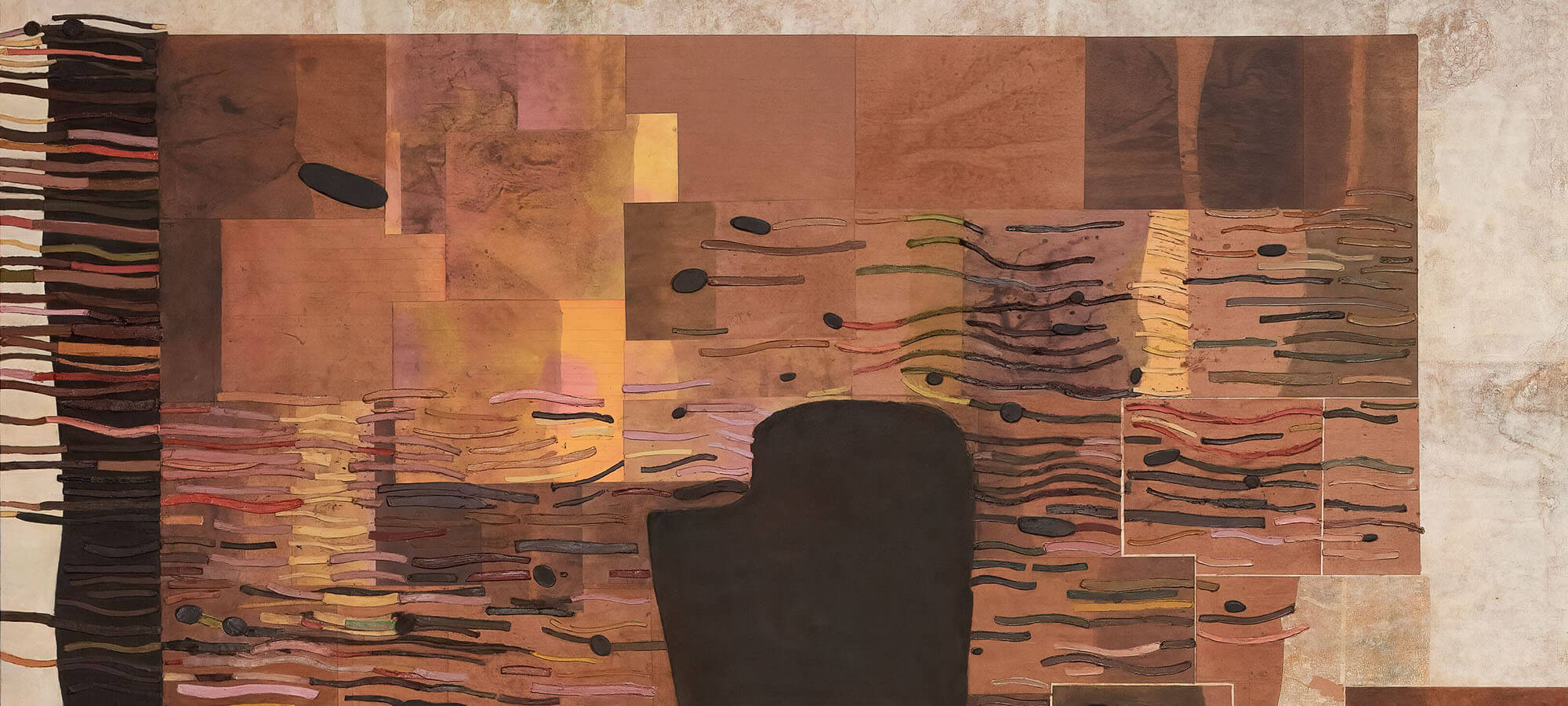
Ellen Gallagher
Paradise Shift
Paradise Shift
2020 Mixed media on canvas 202 x 188 cm / 79 1/2 x 74 in

To build up the surface of ‘Paradise Shift’ Gallagher combines paper and canvas that has been stretched, bleached and incised in striated areas, referencing machine-printed lines, the minimalism of Agnes Martin and expressive accumulations of ink-stained printed matter. Here, an all-over grid of penmanship paper awash in saturations of umber and clay pigments deftly proposes a geographic space in which black and brown interlocking forms appear to float between abstraction and figuration, transforming before our eyes from crustacean like personages into a cluster of tendrils.
‘I try to make my images through...the unruly cracks in the edifice, underneath which there is something to be protected.’—Ellen Gallagher

In this precise and delicate work, we are drawn to the ocean floor where the textured fragments suggest multiple versions of a single event gravitating together within the components of her phantom creatures. Through her laborious processes of application and excavation, Gallagher exposes the overlapping tiers of meaning between history, society and cultural identity which she then transforms, often as a means to reconsider the aesthetic and historical contours of Blackness.
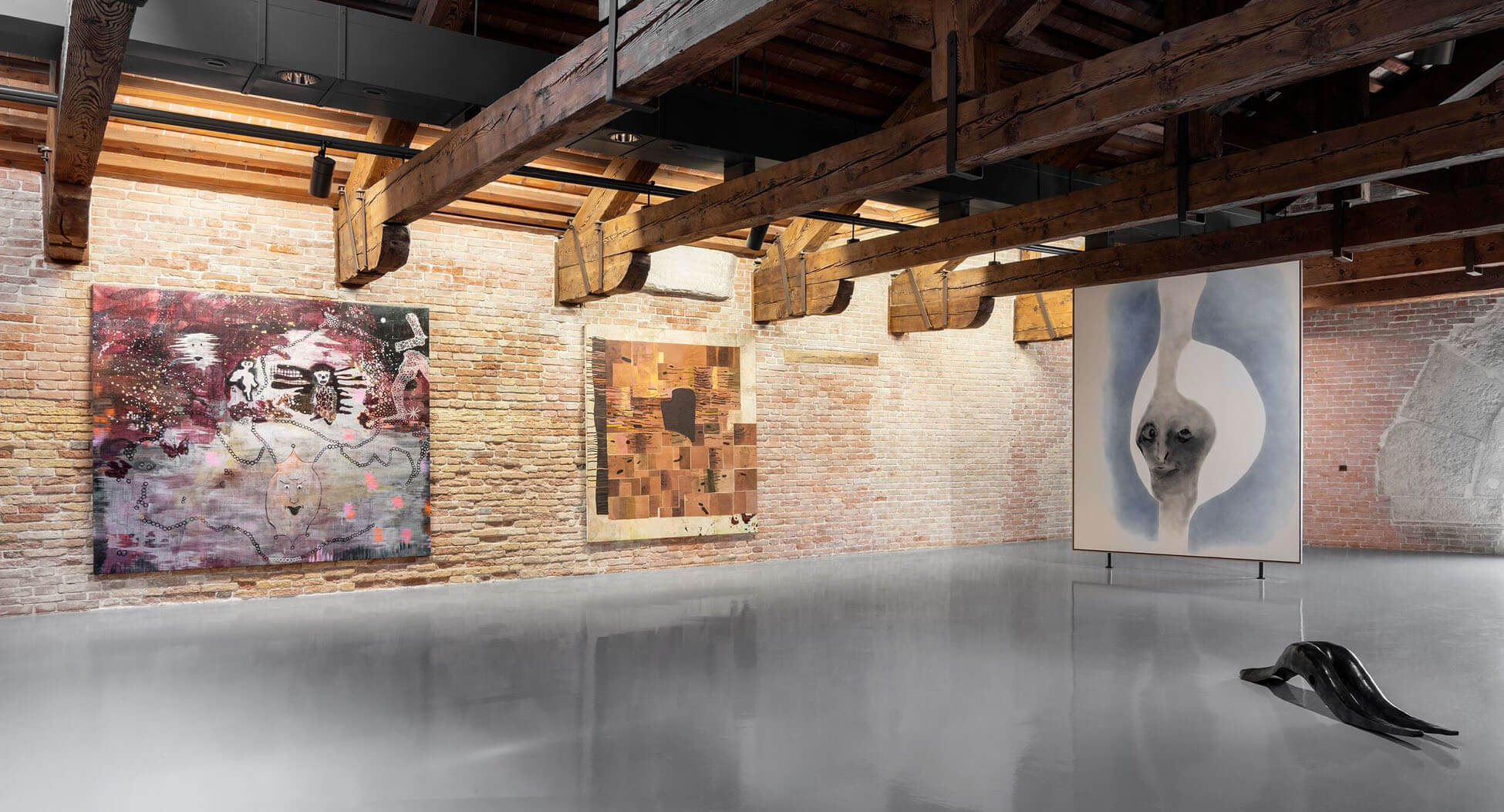
In ‘Paradise Shift’, these influences and examinations coalesce within a prevailing motif in Gallagher’s practice, that of the ocean, marine life, and, by extension, geography — specifically the idea of an archipelago. Gallagher investigates the spaces and histories of islands, focusing on Glissant’s expansion of a geographical or tectonic network to cultural and political identities. The Caribbean islands and their relation to the violent forge of colonialism, a ‘dance of death’, are fundamental to Gallagher’s vision, as are the connections of maritime states and nations.
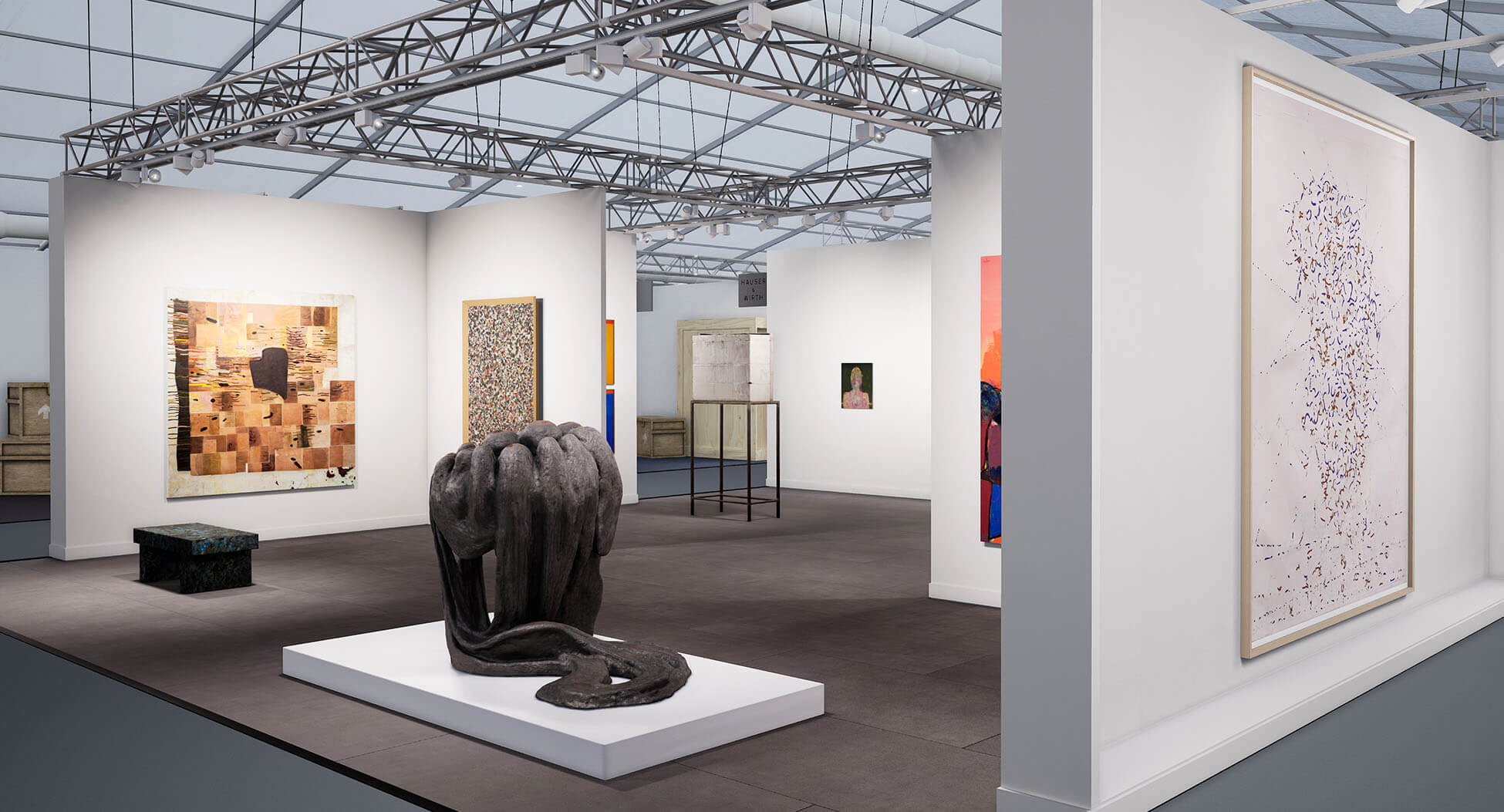
‘Paradise Shift’ derives its world from Drexciya, an influential Detroit-based electronic music duo formed by James Stinson and Gerald Donald, active from 1989 to 2002. Draped in Afrofuturism, the duo created the mythology of a Black Atlantis at the bottom of the mid-Atlantic Ocean, the world of Drexciya, which originated when pregnant African women, who were enslaved and brutally thrown off ships during the Middle Passage, gave birth to offspring capable of breathing underwater. In the liner notes of Drexciya’s 1997 release, ‘The Quest’, Stinson probes: ‘Are Drexciyans water breathing, aquatically mutated descendants of those unfortunate victims of human greed?’
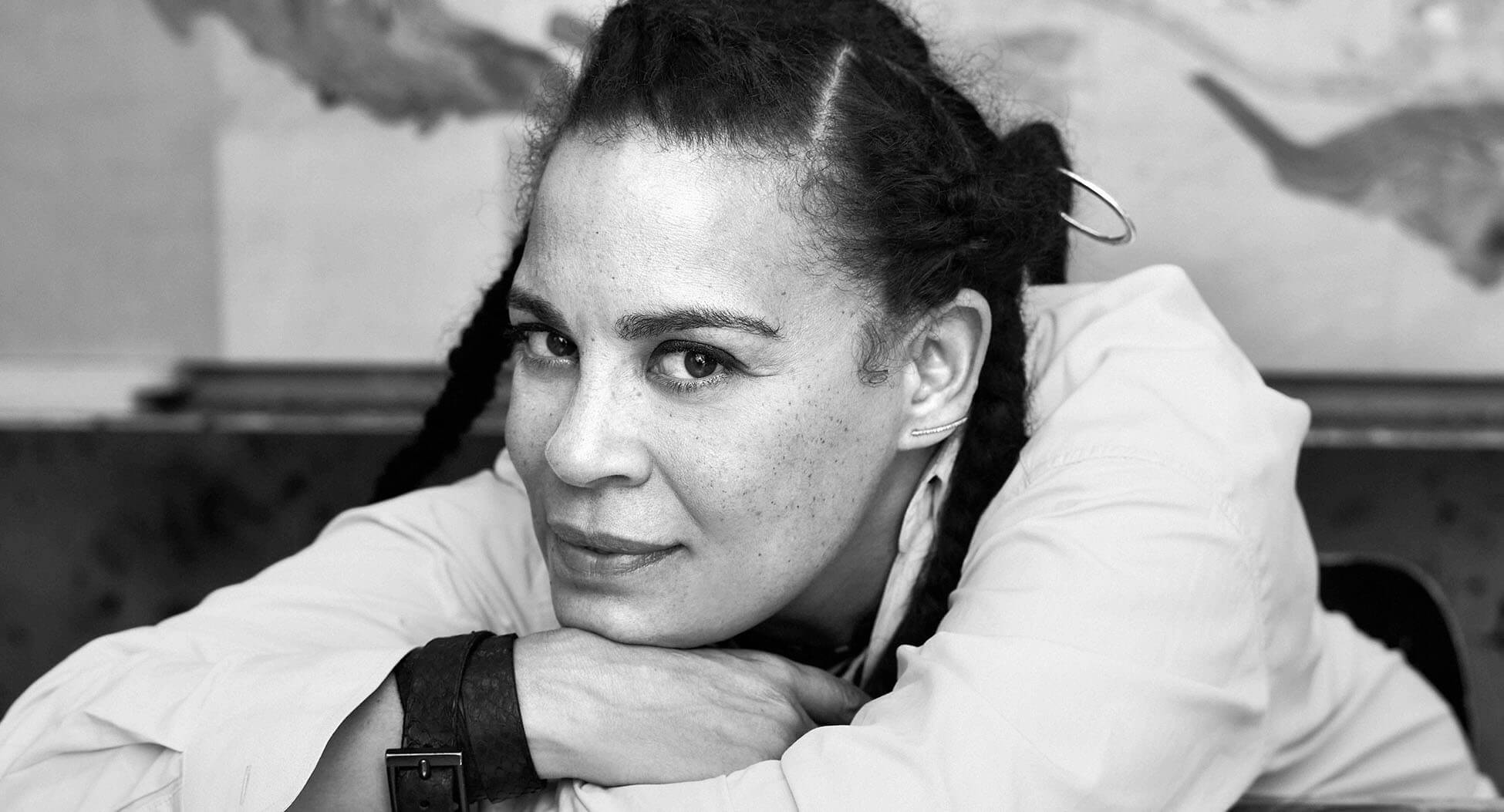
Ellen Gallagher
Since the early 1990s, Ellen Gallagher has employed an extraordinary number of techniques and materials in her art making, resulting in a polyvalent body of work that encompasses painting, drawing, sculpture, collage and film. Her arresting compositions echo a process of transformation through the accumulation and erasure of media, resulting in palimpsestic and topographic surfaces that are often carved, inlaid, mounted, printed, blotted and inscribed. The resulting sumptuous textures of her work bears witness to a singular process that is both materially and conceptually complex in equal measure, exemplified in ‘Paradise Shift’ (2020).
